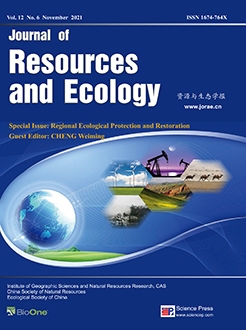Vulnerability research is the core issue and one of the research hotspots of sustainable development science. Vulnerability and its evaluation framework provide a new perspective for rural social-ecosystem studies. This paper introduced the ‘input-output’ efficiency theory and constructed the ‘SEE-PSR’ framework for the analysis of social-ecosystem vulnerability in the rural area in Qingpu District of Shanghai City. The DEA models, spatial autocorrelation model, multivariate logistic regression model, geographical detector and hierarchical cluster model were used to analyze the spatial differences of social-ecosystem vulnerability, and its geographical impact mechanisms and ecological restorations, in 184 administrative villages in this area. The results can be divided into three main points. (1) The results of the ‘input-output’ efficiency model of the EW-DEA based on entropy weight aggregation crossover was more reliable and accurate for the evaluation of rural social-ecosystem vulnerability. The vulnerability of the social-ecosystems in the administrative villages showed a trend of gradual decline from east to west, with an average value of vulnerability of 0.583, and the vulnerability of social systems had become an important factor in constraining the decrease of the vulnerability of the social-ecosystems in the region. (2) The distances from the center of Shanghai City, from Dianshan Lake, from the center of Qingpu District and from the water area were the four dominant geographical factors affecting the vulnerability of the social-ecosystem in this region. The geographical impacts exhibited the spatial differentiations of systemic structure, the substitution of typological attributes and the transformation level. (3) The geographical factors coupling the impact types of the social-ecosystem vulnerability were divided spatially into 10 types. The geographic multi-factor coupling impact types were dominant, which presented multi-cyclic spatial patterns and were dominated by the central multi-factor which was surrounded by the single factor types on both sides. According to the different types, some feasible ways of ecological restoration were proposed, which drew on the experiences of integrated territory consolidation to remediate the vulnerability of rural social-ecological systems. The results of this study can provide scientific reference for rural spatial reconstruction, regional ecological restoration and sustainable development for the regions characterized by conflict in the ‘strict protection of the ecological environment and vigorous development of the economy’.
How to translate text using browser tools
30 September 2021
Geographical Impact and Ecological Restoration Modes of the Spatial Differentiation of Rural Social-Ecosystem Vulnerability: Evidence from Qingpu District in Shanghai
Ren Guoping,
Liu Liming,
Li Hongqing,
Sun Qian,
Yin Gang,
Wan Beiqi
ACCESS THE FULL ARTICLE
ecological restoration
Efficiency
geographical factors
geographical impact modes
Qingpu District
social-ecological system
vulnerability evaluation






